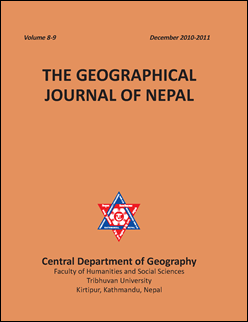Landholding Size and Educational and Occupational Status in Two Villages of Dang
DOI:
https://doi.org/10.3126/gjn.v9i0.17470Keywords:
Landholding size, Educational status, Occupational status, Political economy, Structuralism, Postmodernism, LiteracyAbstract
The landholding size has colossal impact on level of educational attainment and types of occupation in the villages under study where major sources of household income is from agriculture. Truly speaking, those who have large land holding size have accomplished higher education and have got better jobs outside agriculture. But many landless and near landless people are apparently illiterate. The children of these people either never go to school or drop out when they become older enough to help their parents in agricultural activities. People cannot afford to send their children to school as children either have to look after younger siblings or have to graze animals when parents are busy working in the field. The members of households in landless and near-landless category either have to work in the land or have to work as wage laborer. As they are illiterate they cannot get white- collar jobs. This article presents a relation between landholding size, and level of education and the situation of employment. These characteristics have depicted a scenario which tantamount to the manifestation of structures of agricultural economy. It is an attempt to analyze how agrarian relation has impacted the educational and occupational structure of every household. The article aims at revealing economic condition in association with education and occupation among the cultivators who are divorced from the means of production. An effort has been made to seek poverty in educational and occupational structure.
The Geographical Journal of Nepal, Vol. 8-9, 2010-2011: 43-52
Downloads
Downloads
Published
How to Cite
Issue
Section
License
© Authors




